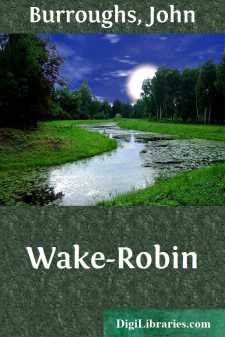Categories
- Antiques & Collectibles 13
- Architecture 36
- Art 48
- Bibles 22
- Biography & Autobiography 813
- Body, Mind & Spirit 142
- Business & Economics 28
- Children's Books 15
- Children's Fiction 12
- Computers 4
- Cooking 94
- Crafts & Hobbies 4
- Drama 346
- Education 46
- Family & Relationships 57
- Fiction 11829
- Games 19
- Gardening 17
- Health & Fitness 34
- History 1377
- House & Home 1
- Humor 147
- Juvenile Fiction 1873
- Juvenile Nonfiction 202
- Language Arts & Disciplines 88
- Law 16
- Literary Collections 686
- Literary Criticism 179
- Mathematics 13
- Medical 41
- Music 40
- Nature 179
- Non-Classifiable 1768
- Performing Arts 7
- Periodicals 1453
- Philosophy 64
- Photography 2
- Poetry 896
- Political Science 203
- Psychology 42
- Reference 154
- Religion 513
- Science 126
- Self-Help 84
- Social Science 81
- Sports & Recreation 34
- Study Aids 3
- Technology & Engineering 59
- Transportation 23
- Travel 463
- True Crime 29
Under the Maples
by: John Burroughs
Description:
Excerpt
UNDER
THE MAPLES
ITHE FALLING LEAVESThe time of the falling of leaves has come again. Once more in our morning walk we tread upon carpets of gold and crimson, of brown and bronze, woven by the winds or the rains out of these delicate textures while we slept.
How beautifully the leaves grow old! How full of light and color are their last days! There are exceptions, of course. The leaves of most of the fruit-trees fade and wither and fall ingloriously. They bequeath their heritage of color to their fruit. Upon it they lavish the hues which other trees lavish upon their leaves. The pear-tree is often an exception. I have seen pear orchards in October painting a hillside in hues of mingled bronze and gold. And well may the pear-tree do this, it is so chary of color upon its fruit.
But in October what a feast to the eye our woods and groves present! The whole body of the air seems enriched by their calm, slow radiance. They are giving back the light they have been absorbing from the sun all summer.
The carpet of the newly fallen leaves looks so clean and delicate when it first covers the paths and the highways that one almost hesitates to walk upon it. Was it the gallant Raleigh who threw down his cloak for Queen Elizabeth to walk upon? See what a robe the maples have thrown down for you and me to walk upon! How one hesitates to soil it! The summer robes of the groves and the forests—more than robes, a vital part of themselves, the myriad living nets with which they have captured, and through which they have absorbed, the energy of the solar rays. What a change when the leaves are gone, and what a change when they come again! A naked tree may be a dead tree. The dry, inert bark, the rough, wirelike twigs change but little from summer to winter. When the leaves come, what a transformation, what mobility, what sensitiveness, what expression! Ten thousand delicate veined hands reaching forth and waving a greeting to the air and light, making a union and compact with them, like a wedding ceremony. How young the old trees suddenly become! what suppleness and grace invest their branches! The leaves are a touch of immortal youth. As the cambium layer beneath the bark is the girdle of perennial youth, so the leaves are the facial expression of the same quality. The leaves have their day and die, but the last leaf that comes to the branch is as young as the first. The leaves and the blossom and the fruit of the tree come and go, yet they age not; under the magic touch of spring the miracle is repeated over and over.
The maples perhaps undergo the most complete transformation of all the forest trees. Their leaves fairly become luminous, as if they glowed with inward light. In October a maple-tree before your window lights up your room like a great lamp. Even on cloudy days its presence helps to dispel the gloom. The elm, the oak, the beech, possess in a much less degree that quality of luminosity, though certain species of oak at times are rich in shades of red and bronze. The leaves of the trees just named for the most part turn brown before they fall....












